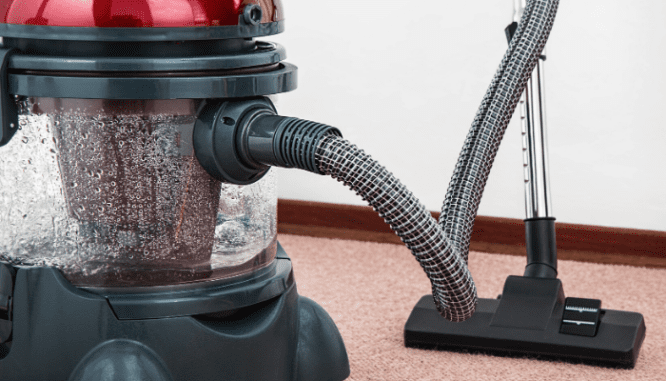Use These 75 Tips to Streamline Your Move Into a New House
- Published on
- 10 min read
-
 Alison Hunter Contributing AuthorClose
Alison Hunter Contributing AuthorClose Alison Hunter Contributing Author
Alison Hunter Contributing AuthorIn addition to real estate, Bay Area native and quasi-techy Alison Hunter also writes about the intersection of art, culture, and technology.
Congratulations on the new place! Whether you’re a first-time homeowner or you’ve done it all before, getting ready for a move is a super-exciting (and massively stressful) undertaking.
Though it’s considered one of the most stressful events of modern life, remember that the hassle of moving into a new house is balanced by joy and excitement for the adventure of relocation.
To help you focus on positive aspects, we’ve assembled 75 tips for moving into a new house. From pre-move prep to getting cozy in your new abode, this article offers tip-upon-tip, delving into the often-overlooked and obscure tricks you can use to make moving into your new house a streamlined affair.
So kick back and prepare to upload wisdom drawn from data and supported by firsthand experience. We’ll take you from filling your first box to the moment your new home finally feels like home!

First things first
John Verdeaux knows real estate. He knows all sides of the business, from buying to selling to financing to HOA BBQs. Verdeaux has seen cross-country moves executed in excellence like a symphony, and cross-town moves go down in chaos like a kindergarten play. The difference, he says, is planning.
So in the spirit of first things first, our first 10 tips focus on preparation.
1. Change your mailing address with the USPS
The USPS will forward mail to your new address for 12 months, but it’s best to get ahead of this by submitting the forms a couple of weeks in advance. You can do this using a form available at the post office, or online.
2. Change your address online
All your credit cards, subscription services, and delivery apps will need to reflect your new digs.
3. Send a moving announcement
Let your friends and family know you’re on the move! They’ll be happy to hear from you. (There are some adorable options on Etsy.)
4. Start packing early
We. Cannot. Emphasize. This. Enough.
Nobody has ever said, “I sure am glad I waited this long to start packing!” Allow plenty of time to organize and get rid of things you no longer want.
Verdeaux’s rule of thumb: Allow at least 30 days to pack, and focus first on the rooms you use least.

5. Have a garage sale
Total win/win: best way to sell a house full of stuff, and more loot to boot.
6. Register your vehicles
If you move out of state, a trip to your new local DMV may be in order. For a local move, remember that residential parking permits are sometimes necessary.
7. Register to vote
Many states make this an easy part of your DMV registration experience.
8. Find new care providers (if necessary)
From physicians to hairdressers, you’re going to need a new one. And don’t forget to obtain copies of your school/medical/dental records if you’re leaving town, and transfer your prescriptions to your new pharmacy.
9. Transfer utilities
Make sure to have your final bill (if it’s paper) mailed to your new address. Bonus points for having your internet service up and running immediately, along with all the other necessary utilities.
Verdeaux says often, agents will assist with the process for those moving from out of town — so if that’s you, talk to your agent about getting some assistance.
10. Walk through before closing
Make sure everything is as it should be according to your contract. Test light switches, outlets, taps, locks, windows — everything.
If you haven’t already, measure the rooms in your new house to get an idea of what will fit and what you need to donate (or sell at your yard sale!)

Moving day mayhem, or sweet, orderly harmony?
Whether you’re moving across the country or across the street, somehow, all of your stuff has to get from Point A to Point B, and that can be tricky.
But you packed like a pro! You’re absolutely sure where the coffee maker is and you’re really ready to move into your new house. The following tips take you through everything to do once you’ve arrived.
11. Treat your movers right
Remember to budget in the standard 20% tip (cash) if you hired movers, and offer cold beverages or snacks to help lighten their load.
Verdeaux reminds us that when it comes to movers, you get what you pay for, and that extends to the generous offers you may get from friends and family who offer to help you move for free …but are more likely to ding and dent your stuff than trained professionals.
12. Use a whiteboard or digital whiteboard for organizing tasks
This could be a shared file in the cloud, a big piece of paper taped to the wall, a constellation of Post-Its, or an actual whiteboard. Anything that works for you to synchronize your thoughts, actions, and priorities will help you settle in faster.
13. Make a home maintenance checklist
This is especially useful for first-time homeowners whose former landlords may have taken care of a lot of things behind the scenes: cleaning gutters, trimming trees, exterior maintenance, fixing fences, and so on.
14. Prioritize what repairs you’ll want to make
Make sure you stay in the house for at least a few weeks before you do anything major! There are some minor tasks you can and should tackle immediately, though: dripping faucets, touching up wall paint, and so on.
15. Pace yourself
Temper your enthusiasm with a realistic understanding of what you can get done each day without totally wiping yourself out. Verdeaux reminds us that this is an emotional process, so allow yourself a little slack each day.

16. Paint
What’s first on the list of “What can I do now with relative ease that will be a huge pain when I’ve unpacked?”
PAINTING! If you want to paint the walls (or, ugh, the ceiling), then the best time to do it is before you have moved anything into the house. Consider whether you want to delay your move-in (or rent a storage unit) so you can paint quickly and easily, let the paint dry, admire your work, then move in.
17. Connect your appliances
You might not think you want your washer and dryer set up already …but trust us. Go ahead and start making this house your home.
And in states where you bring your own fridge, well, you’re going to need to be able to store your food right away!
18. Change your locks
Find a highly-rated locksmith and keep their number handy. Verdeaux also recommends an overall security check: make sure your crawlspace is padlocked, check your window latches, and reset the codes for any keyless points of entry.
19. Check your outdoor bulbs
When the sun goes down, make sure your exterior lights are shining bright. Install motion-activated lights for added security.
20. Unpack your essentials
Resist the temptation to start ripping open boxes. Be mindful of what “essential” means and try to stay focused on big picture stuff.
Hopefully Old House You did a favor for New House You and packed (and labeled!) essentials separately in a handful of boxes you can open first.
21. Childproof and pet-proof
Batten down the hatches before Hurricane Kid or Hurricane Pet make landfall in your new home.

Deep clean
This could be an article unto itself, but some must-dos as you are moving in include:
22. Buy new cleaning stuff
Half-empty bottles of cleaning products and old, musty mops can be left behind in a move. Buy new, high-quality products that will stand the test of time.
23. Dust
Start with the cobwebs on the ceiling and light fixtures, and end with wiping down the baseboards.
24. Clean out the P-traps.
These are the U-shaped pipes beneath your sinks. And trust us — they are filthy. (It’s not a bad idea to snake your drains, too, while you’re at it.)
25. Buy new toilet brushes
There is an unspoken law that states toilets and their brushes are pair-bonded for life.
26. Clean the dryer vent
This often-ignored bit of dryer maintenance can prevent fires, and it’s especially easy to do before you hook up your dryer.

27. Clean the windows
Then you can really enjoy those new views!
28. Service the chimney
Don’t let your plans for your first cozy fire be foiled by a house full of smoke! If it wasn’t part of your inspection, have a professional chimney service take a look at your stack.
29. Clean under the sinks
You’re already down there doing the P-traps! Throw down some contact paper while you’re at it to protect your under-the-sink surfaces.
30. Check your home’s filters
This can include the furnace filter, water filters on taps or your fridge, and air intake filters. Once you figure out the sizes, buy a few spares and document it in your homeowner file.
31. Find/print/obtain manuals for all the home appliances
Even if you don’t have the original manuals for appliances, most manufacturers provide free PDFs online. Now, where exactly is the printer…?
32. Find the emergency system shutoffs
In addition to your fuse boxes, make sure all the adults know where to find and how to operate gas and water shut-off valves, as well as the home’s electrical breaker box.
33. Introduce yourself to the neighborhood
This may sound more Norman Rockwell than real life, but a quick “hello!” goes a long way. Before you know it you’ll be watering each other’s plants and feeding cats while your neighbors vacation!
34. Use painter’s tape to label your light switches
You’ll eventually learn what does what, but there is no shame in using a cheat sheet until your fingers gain muscle memory.

35. Upgrade to dimmer switches
Do it! The effect on ambiance is amazing. (First, make sure your bulbs are dimmer-compatible.)
36. Consider removable wallpaper
Get a feel for colors and vibes with easy-up, easy-down temporary wallpaper.
37. Buy shims
No matter the age of the house, a slightly sloped floor is a guarantee. Shims are an inexpensive and easy way to keep your furniture level.
38. Get an energy audit
You can do this on your own, you can hire a professional service, or your local utility company may potentially offer this service for free.
39. Figure out what tools and equipment you may need to buy
A lawnmower or weed whacker? A hose or snow shovel?
There may be new things to take care of in your living environment. But before you buy, check to see if your new community has a tool lending library, or use this as an excuse to meet your neighbors.
40. Start a homeowner file
Document repairs, dates you changed filters, and other information you’ll want to remember here. It’s also a great place to store appliance manuals and warranty information.
41. Spend the night before you make final layout decisions
Road noise. A neighbor’s floodlight. Five a.m. tennis practice at the court across the street. There is much you can’t know about the nature of your home’s dusk-til-dawn routine without actually being there for it, so it pays to wait a little bit before you decide what goes where permanently.
42. Tweak your budget
When you’ve been in the house for a month or two, you’ll have a better idea of what utilities cost and how much you can realistically set aside for home maintenance.
43. Test the soil
If you have young children, egg-laying chickens, or plan to grow food, it is important to know your soil is safe.

44. Check your fences
If you’ve got a back yard and a dog, make sure the former can contain the latter. You may also want to make yourself aware of wild predators and protect your pooch accordingly.
45. Install doggy doors
It’s good to get the pooch used to the new routine as soon as possible.
46. Install lights in the closets
Three cheers to the person who lived without them, but let’s be real: You need at-a-glance outfit configuration without pulling garments out into the light.
47. Install outlets
If your new house is an old house, it’s likely it doesn’t have enough electrical outlets for your modern needs. Adding a few outlets is a fairly simple process, but you’ll also want to make sure that your electrical system can handle more outlets.
48. Install ethernet
Most of us make do with one or two wireless routers and live with “offline” areas of our house, but running ethernet cable to support multiple routers is well worth the effort.
49. Test well water
If you’re moving into a new house with well water, and you didn’t do it during the inspection, you should have it tested.
50. Check your septic system
In most states, a septic check-up is not part of the buyer’s inspection; if you didn’t opt to get it done, then now would be a great time to make sure everything is copacetic.
51. Be ready for trash day
Get to know the waste management systems for your area. Do you have curbside recycling? Curbside compost? When is trash day? And when will they drop off your trash cans?
52. Prepare bathrooms for your beauty regimen
If you are a regular multi-product, multi-tool using kind of person, be sure you have the space for the stuff you need.
Adding hooks, shelves, and cabinets in anticipation of your routine will save you from clutter. Consider your lighting and mirror situation, too!

53. Accommodate your kitty
If you’re moving with cats, they will be scared and want somewhere to hide and take in their new surroundings. Help them find a place to acclimate.
54. Swap out the showerheads
This is a super easy upgrade that can change the whole feel of your shower (quite literally).
55. Check your house number
Sometimes a rushed paint job can lead to covered-up house numbers. Make sure yours are high-contrast and easily visible from the street.
56. Audit your breaker box
It is tedious, but a quick circuit-by-circuit check-up can save you from flipping switches at random when a power surge trips a breaker. (A label maker is super-helpful for this task.)
57. Fix squeaks and swinging doors
Every house has at least one door with a mind of its own. Tackle this project while you still have plenty of space to work.
58. Install shelf liners
You’ll thank yourself later when the insides of your shelves are pristine despite years of use (and shelf liners can be cute, too!).
59. Update old light bulbs with energy-efficient bulbs
Even if the old incandescent bulbs haven’t burned out, it is advised that you swap them out for energy-efficient ones before they reach the end of their life. RIP, incandescent bulbs.
60. Figure out what your walls are made of
Depending on the material (drywall, plaster and lath, metal studs, cinderblock, and so on) you may need specialized hardware and tools to hang your stuff.

61. Got plants?
Figure out which rooms and windows will be their happiest homes. And be patient; like your cat, there may be a period of adjustment (and rebellion … maybe even mutiny) before your plants adjust to the new house.
This is also a great time to get to know your local nursery staff. They can often diagnose the cause of a sad plant just from a cellphone picture.
62. Get serious about storage
Invest in high-quality storage racks for places where you plan to stow your less-used items, like the garage, basement, or attic.
63. Invest in curtains
Curtains are excellent insulators! Keep your heat in or keep the sun out with quality window dressings.
64. Open an account on Nextdoor
Even if you just log in to see what everyone else is up to, you can learn a lot about your neighborhood through lurker osmosis.
65. Subscribe to your local paper
Your new hometown paper can be a great guide for local businesses along with community and political events, not to mention new developments and other real estate-related news.
66. Check the batteries
Safety first! Check the smoke detectors and carbon monoxide detectors, and buy spare batteries for them, then document when you change them out in your homeowners’ manual.
67. Find a go-to handyperson
For projects beyond your abilities (or time, or interest), ask your neighbors for recommendations or try Angie’s List.
68. Get prepared for emergencies
Know the way to the closest ER, have local emergency numbers and first aid handy, and put together a plan for what to do in case of fire or natural disaster.
Review procedures and meeting places with all members of the family (don’t forget pets), and practice the drill. In earthquake country, put together an earthquake kit (and sign up for the MyShake app).
69. Get to know the street sweeping schedule
If you or your guests are limited to street parking, memorize the schedule and put some calendar reminders in your phone with notification alerts. It is less than ideal to allocate part of your monthly budget to parking tickets, though that is what many city-dwellers do.
70. Focus on your front yard first
Spruce it up and kick back with a porch swing on your patio to get to know the friendly faces in your neighborhood.
71. Remove cords, patch holes
The war of words between generations recently gave rise to the term “boomer hole,” which describes any hole left behind when antiquated technology makes way for advances. Chances are good you won’t miss that coaxial cable or telephone jack, so pull it out and patch the holes (but seriously, run ethernet everywhere).

72. Figure out what to do with all those empty moving boxes
Even if you have curbside recycling, chances are good you’ll exceed the pick-up limits for the first couple of weeks.
73. Check your oven temperature
Buy an oven thermometer and test it before you bake (or botch) your first meal at your new house.
74. Arrange your furniture
Sometimes you get it right the first time, but sometimes it takes a while. As you settle into the seasons and your patterns of use in your new house, the furniture arrangement will become an extension of the architecture.
75. Reap your rewards!
Truthfully, there are only a few tasks for which the order of operations demands completion before you move in: major renovations, knocking down a popcorn ceiling, installing a moat and drawbridge — those are things that must precede your taking up residence in your new house.
But here’s the thing: It’s important to use the thrill and motivation of moving into a new home to carry you through tasks you may otherwise put off forever.
We all live in places that have tiny blemishes and vexing imperfections to which the eye adjusts and the mind acclimates. So before you find yourself saying, “Well, at least only small bugs can fly through that hole in the screen door”, spring into action!
You will feel the true benefit of your hard work when you sink deeply into your first Sunday-at-home couch session, satisfied and relaxed… and without a single “to-do” in view.
Header Image Source: (Pixabay / Pexels)
